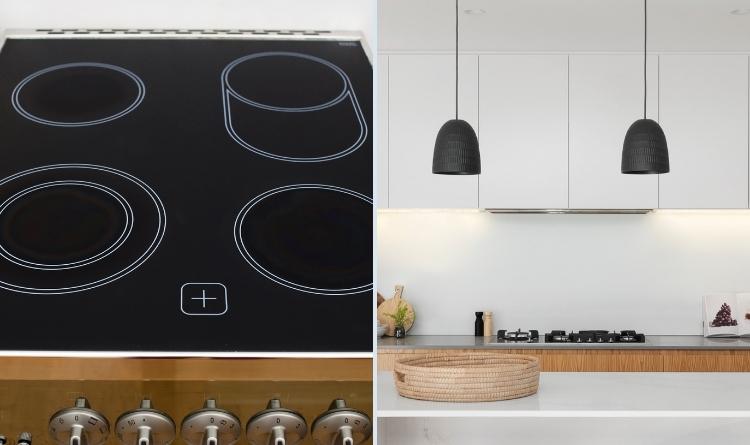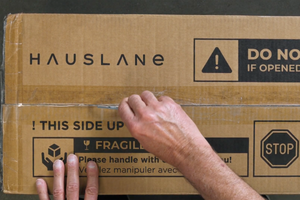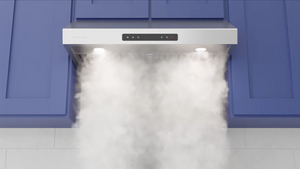The Difference Between Induction Hobs and Built-in Range Hoods
Venting hobs and range hoods one in the same? Not exactly. These two cooking appliances remove odors and smoke but function quite differently. Let’s take a look at how each appliance works, their advantages, and differences so you can decide which one is the ideal fit for your kitchen.
What We'll Cover:


What is a Venting Hob?
A venting hob, also known as a downdraft hob or an induction hob with integrated ventilation, is a type of cooking appliance that combines a cooktop and a ventilation system into a single unit. The ventilation system is built into the hob. It is designed to suck smoke, steam, and cooking odors down through the hob's surface and exhaust them outside.

What is a Built-in Range Hood?
A built-in range hood is a separate appliance that is mounted above the cooktop or stove. It works by drawing smoke, steam, and cooking odors up through a duct where the air is exhausted outside or purified and redistributed back into the kitchen.

What Advantages Do they Share?
A venting hob and an under cabinet range hood share the same main advantages of having proper kitchen ventilation for an overall enhanced cooking experience:
- Improved indoor air quality: These air ventilation systems eliminate smoke, toxins, fumes and potentially harmful chemicals from your kitchen.
- Cleaner kitchen: These kitchen appliances snag and trap grease before it can build up in your kitchen. No more scrubbing countertops, cabinets, and floors on the daily!
- Fresher-smelling environment: Cooking odors tend to linger and are one of the last things you want to wake up to the next morning. Both vent hobs and range hoods help waft away these odors for a fresher start to your day.
- Space saving: The sleek and inconspicuous design of an induction hob and a built-in range hood helps leave room for extra storage or open shelving.

What's the Difference Between a Venting Hob and a Built-in Range Hood?
While both built-in range hoods and venting hobs serve the same purpose of removing smoke, steam, and cooking odors from the kitchen, they differ in their placement in the kitchen, operation, features, size, and style, as well as the method of installation.
Operation: The main difference starts with their operation. A built-in range hood is installed over a cooktop and provides wide perimeter suction; pulling smoke up before it has the chance to settle in your home. Hauslane's IN-R100 built-in range hood offers ducted or ductless venting which means that you can send your dirty air outside, or allow it to purify and redistribute back into the kitchen. The large area coverage of a built-in range hood also helps to control the temperature in your kitchen while you cook. Another difference is that you can choose a gas or electric stove with a range hood whereas an induction hob only allows for electric cooking.
A venting hob incorporates a ventilation system into the cooktop itself and is typically located at the back or sides of the hob. It works by drawing smoke, steam, and cooking odors down through the hob's surface and exhausts them outside only. Because there is no air recirculation with an induction hob, the fan doesn't have to work as hard making the operation less noisy. However, the fan suction from a venting hob is more confined to one area compared to a range hood. Some home chefs prefer the upward suction of an under cabinet range hood vs. the fight with gravity apparent in a venting hob.
Features: A built-in range hood sits right above your stove and provides the necessary lighting to keep you safe while cooking. A venting hob will require separate overhead lighting. Hauslane's built-in range hoods offer energy efficient changeable LED lighting.
Maintenance: Both types of ventilation systems are generally easy to clean and offer dishwasher safe filters. However, there tends to be more of a concern for dropping food bits or splashing liquids into venting hob and may require more frequent cleaning.
Style & Size: Due to a venting hobs location, the sizes and styles offered can be limited. Some may argue that a venting hob gets in the way of their cooktop space. A built-in range hood ultimately provides a boost of out-of-sight aesthetic compared to a venting hob that is visible on your counter surface. On the other hand, a kitchen might lack the overhead space for a built-in range hood.
Installation: A built-in range hood can be installed by hiring an expert or taking on the project DIY style. Installing an induction hob requires hiring a professional who is able to connect it to the correct power supply and mains.
Which kitchen vent system is better? That's up to you to decide! Most of these factors can be based on your daily cooking habits and your preferences as a home chef. Considerations like size, ductwork, and installation may be what sways your choice; or may require some extra construction to achieve exactly what you want for your kitchen. At the end of the day, proper kitchen ventilation will help make cooking more enjoyable with benefits that last for years.
If you need more help deciding on the perfect range hood for your kitchen, check out our Buyer's Guide which explains everything you need to know before buying a range hood.








